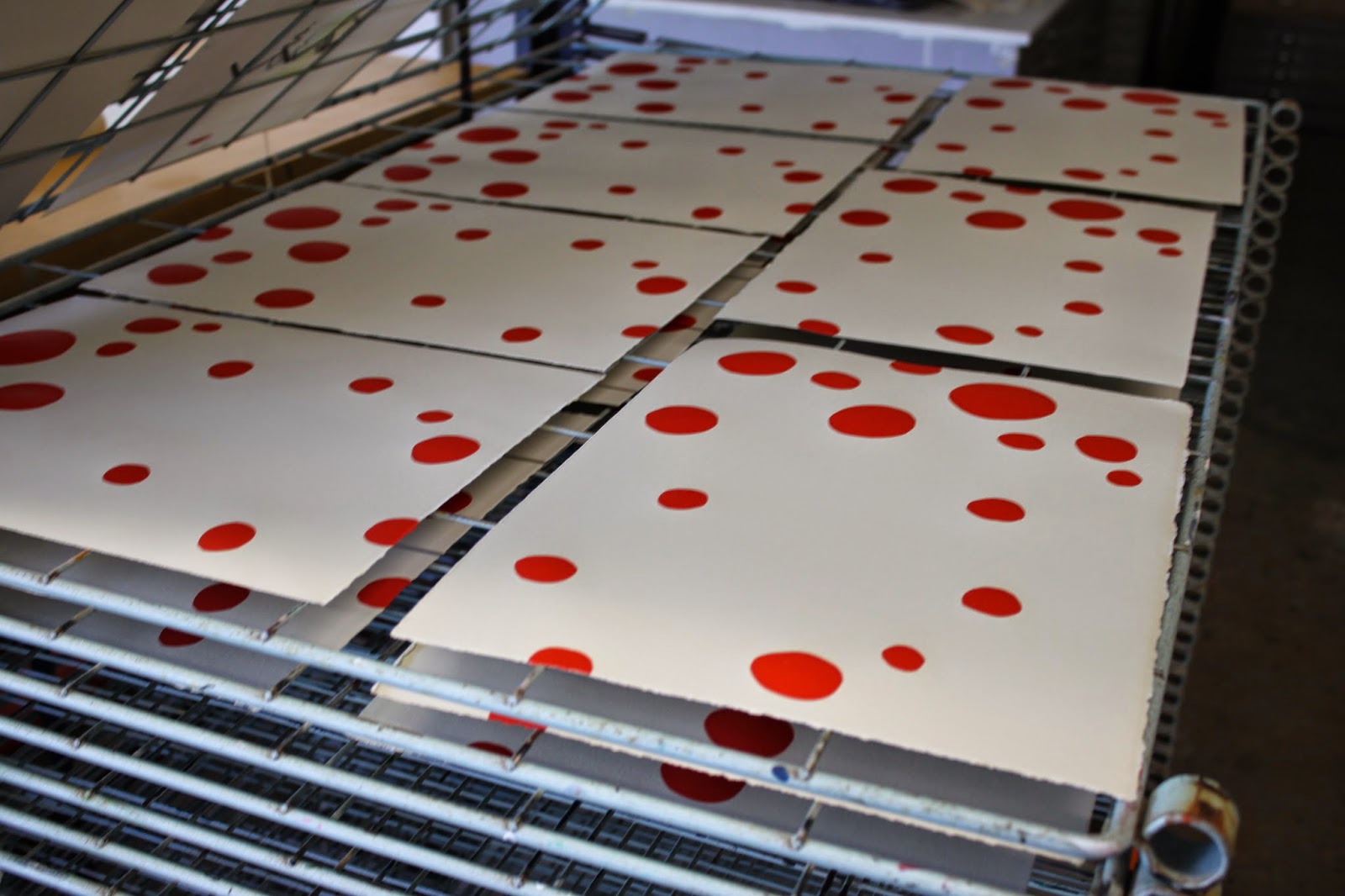Aloha Friends,
This print is the second in my ongoing On The Spectrum series. I am moving along with the series and as each print happens I am getting more and more free with my mark making and my focus on the my concept. I really enjoy the play of line and dots on this one. Thanks for looking!
***
On the Spectrum is a 26 part print series, one for each letter of the alphabet, that explores interactions of mental illnesses, developmental disorders and perceived normalcy as abstract landscapes. Please read my artist Statement for more details.
***
Artist Statement: There is a strange disconnect between mental illness and normalcy – as if there is a stark dividing line between the two: Black and white, us and them, completely separate. I believe this arbitrary classification, ill, healthy, recovering... is very similar to how we catalog our colors: blue, red, green... The visible color spectrum reflects the human experience. An experience where colors cannot be contained as single, definable points. The spectrum is one band of ever shifting, transitioning hues, as are we – our lives and our experiences are continuous and overlapping, yet discreet.
We all exist in a world with other people. We interact daily with a wide range of personalities. It is not possible to limit your experience to “normal.” We are but one piece in the cosmos. No one exists in a vacuum. So instead of pushing past others whose mental or physical health might not reflect exactly our own, we must embrace.
We are made of many parts: our personalities, our bodies, and our world.
We all exist in a world with other people. We interact daily with a wide range of personalities. It is not possible to limit your experience to “normal.” We are but one piece in the cosmos. No one exists in a vacuum. So instead of pushing past others whose mental or physical health might not reflect exactly our own, we must embrace.
We are made of many parts: our personalities, our bodies, and our world.
***
Characteristics:
Mania is the defining feature of bipolar disorder,and can occur with different levels of severity. With milder levels of mania, known as hypomania, individuals appear energetic, excitable, and may be highly productive. As mania worsens, individuals begin to exhibit erratic and impulsive behavior, often making poor decisions due to unrealistic ideas about the future, and sleep very little. At the most severe level, manic individuals can experience very distorted beliefs about the world known as psychosis. A depressive episode commonly follows an episode of mania. The biological mechanisms responsible for switching from a manic or hypomanic episode to a depressive episode or vice versa remain poorly understood.
Barnett JH, Smoller JW (2009). "The genetics of bipolar disorder". Neuroscience 164 (1): 331–43. doi:10.1016/j.neuroscience.2009.03.080. PMC 3637882. PMID 19358880.
Beentjes TA, Goossens PJ, Poslawsky IE (October 2012). "Caregiver burden in bipolar hypomania and mania: a systematic review". Perspect Psychiatr Care 48 (4): 187–97. doi:10.1111/j.1744-6163.2012.00328.x. PMID 23005586.
Salvadore G, Quiroz JA, Machado-Vieira R, Henter ID, Manji HK, Zarate CA (November 2010). "The neurobiology of the switch process in bipolar disorder: a review". J Clin Psychiatry 71 (11): 1488–1501. doi:10.4088/JCP.09r05259gre. PMC 3000635. PMID 20492846.
Mania is the defining feature of bipolar disorder,and can occur with different levels of severity. With milder levels of mania, known as hypomania, individuals appear energetic, excitable, and may be highly productive. As mania worsens, individuals begin to exhibit erratic and impulsive behavior, often making poor decisions due to unrealistic ideas about the future, and sleep very little. At the most severe level, manic individuals can experience very distorted beliefs about the world known as psychosis. A depressive episode commonly follows an episode of mania. The biological mechanisms responsible for switching from a manic or hypomanic episode to a depressive episode or vice versa remain poorly understood.
Barnett JH, Smoller JW (2009). "The genetics of bipolar disorder". Neuroscience 164 (1): 331–43. doi:10.1016/j.neuroscience.2009.03.080. PMC 3637882. PMID 19358880.
Beentjes TA, Goossens PJ, Poslawsky IE (October 2012). "Caregiver burden in bipolar hypomania and mania: a systematic review". Perspect Psychiatr Care 48 (4): 187–97. doi:10.1111/j.1744-6163.2012.00328.x. PMID 23005586.
Salvadore G, Quiroz JA, Machado-Vieira R, Henter ID, Manji HK, Zarate CA (November 2010). "The neurobiology of the switch process in bipolar disorder: a review". J Clin Psychiatry 71 (11): 1488–1501. doi:10.4088/JCP.09r05259gre. PMC 3000635. PMID 20492846.
Mahalo for looking!
Boz Schurr
All work is copyright 2015 Boz Schurr. Please do not use without my permission. Mahalo!





No comments:
Post a Comment